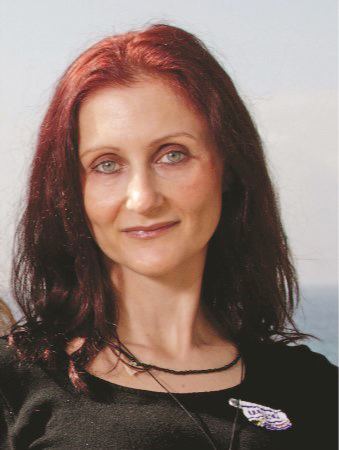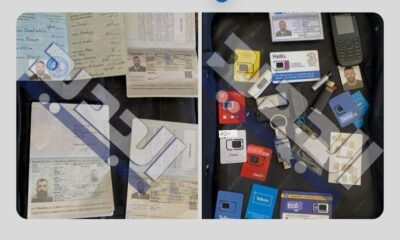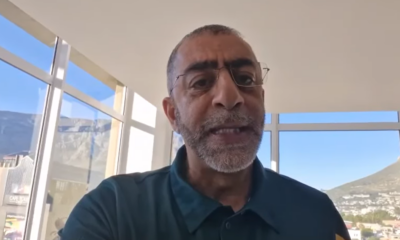
Israel

All eyes on Israel’s north
It took 30 firefighting crews hours to put out more than 4 000 dunams (1 000 acres) of fire in the north of Israel. That was just on Monday night, 3 June. Infernos have been blazing for weeks as firefighters battle to douse fires caused by incessant rocket, drone, and anti-tank missile attacks.
Images coming in from towns like Katzrin, Kiryat Shmona, and others show decimated buildings and fires that blaze perilously close to civilian areas. The region looks like a war zone. It’s not Gaza or the south of Israel, but the north, where Hezbollah and Hamas factions in southern Lebanon have been pummelling the area since 8 October 2023 in “solidarity” with Gaza.
Hezbollah poses a significantly greater threat than Hamas. The Iranian proxy has unequivocally violated United Nations (UN) Resolution 1701, which clearly calls for Hezbollah to remain north of the Litani River. UN Interim Forces in Lebanon recently had its mandate extended, yet has done nothing to rein in Hezbollah aggression.
The international community and media have been silent while focusing solely on Israel’s war with Hamas. In recent weeks, celebrities have climbed on the virtue-signalling bandwagon to share a graphic saying, “All eyes on Rafah”. It would be incumbent on world leaders and self-righteous media outlets to focus their sites on the north. Diplomatic efforts have fizzled out.
Hezbollah is Hamas on steroids. Hezbollah’s equivalent of Hamas’s Nakba fighters, known as the Radwan forces, are a lot more sophisticated and better trained, and Hezbollah’s arsenal of rockets is estimated to be in excess of 160 000. These rockets, which are significantly more sophisticated than the ones fired by Hamas, have the entire state of Israel covered. It’s a terrifying thought.
As the Israel Defense Forces (IDF) evacuated southern communities in preparation for the military operation into Gaza, northern communities evacuated as well. Israel has more than 100 000 internal refugees or “internally displaced people”. Towns and kibbutzim on the border are ghost towns, and the impact of this on farms and the regional economy has been massive. The alerts of incoming projectiles and drone infiltrations beep throughout the day from Metula to Nahariya, the southern Galilee, and one of the prime targets, Meron Air Base.
One of the worst hit towns is Kiryat Shmona. On Monday night, police rushed to evacuate anyone who may not yet have been evacuated from the town.
Doron Shnaper, the spokesperson for Kiryat Shmona, said, “Under the orders of the firefighting forces and Kiryat Shmona police, we’ve begun evacuating residents who remained in the city in spite of the evacuation order. We’re going door to door, asking those in their homes to evacuate immediately.”
Six IDF reservists and five citizens were treated for smoke inhalation.
About 15 active fire sites were reported in the Galilee-Golan region alone, which Israeli media said resulted mostly from rocket fire on a day as hot as 43 degrees centigrade in Kiryat Shmona and the Kinneret (Sea of Galilee).
Former Prime Minister Naftali Bennett had harsh criticism for the government.
“These are tough days, but the sense that there’s someone in charge, even in difficult times, isn’t a luxury, it’s an existential need. We must save the north. The Galilee is going up in flames. The fire is spreading,” Bennett said, referring to Hezbollah’s intensified rocket and drone attacks.
“Beautiful and flourishing places have turned into heaps of rubble. Some residents who were evacuated are already planning their lives elsewhere. This is a grave strategic event, and can in no way be normalised. The north’s abandonment is dangerous for our future. The prime minister must begin to manage, and now.”
National Security Minister Itamar Ben Gvir visited Kiryat Shmona for a situational assessment, on Tuesday, 4 June, and demanded “war”. “They’re burning us here. All Hezbollah strongholds should be burned, they should be destroyed. War!” he cried.
Hezbollah’s attacks in the north have led to the deaths of 10 Israeli civilians and 14 Israeli soldiers and reservists.
On Tuesday, Israel’s war cabinet convened to discuss the situation in the north. IDF Chief of Staff Herzi Halevi stated that Israel was nearing a decision on whether to launch war against Hezbollah. “We’re approaching the point where a decision will have to be made, and the IDF is prepared and ready for this decision. We’ve been striking here for eight months, and Hezbollah is paying a very high price. Hezbollah has increased its attacks in recent days, and we’re prepared after a very good process of training up to the level of a general staff exercise to move to an offensive in the north. Strong defence, readiness for an offensive, we’re approaching a decision point.”
For the Israeli public, the situation in the north is becoming increasingly untenable and patience is wearing thin. The north is on fire, and the eyes of the world are shut. Israel needs to take decisive measures sooner rather than later. Our citizens deserve nothing less.
- Rolene Marks is a Middle East commentator often heard on radio and TV and is the co-founder of Lay of the Land and the SA-Israel Policy Forum.











Gary
June 6, 2024 at 6:27 pm
Israel must do all it can to stay in existence and protect its people no matter what the muslim casualty toll is.